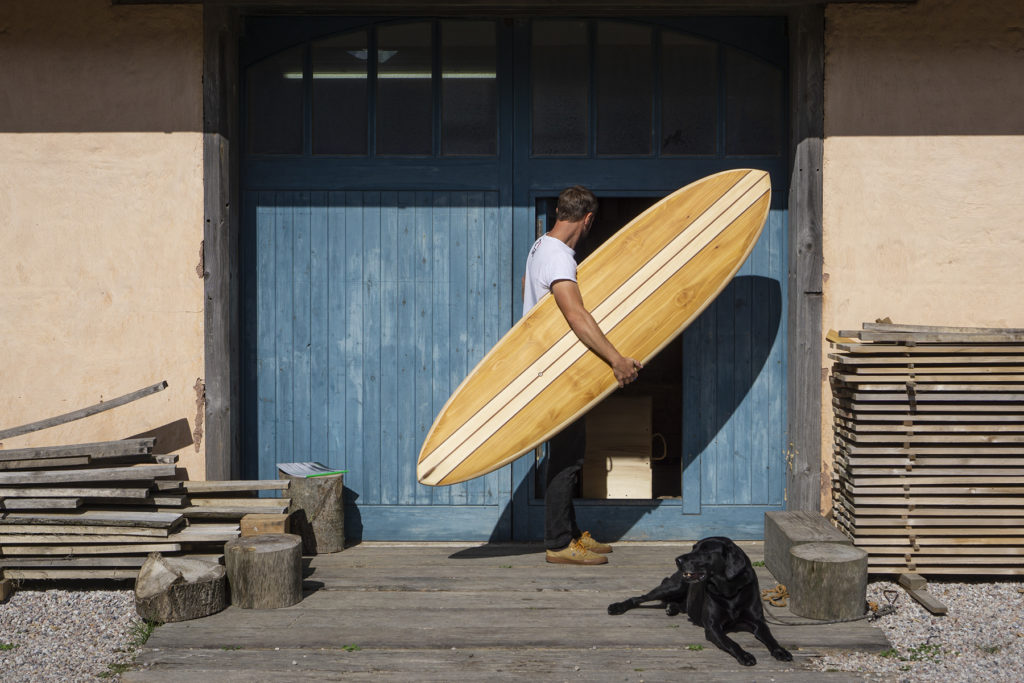07 . 02 . 16
We’ve had a rather unusual surfboard stored in the workshop for the past year or so; it’s a twelve feet long replica of a Tom Blake style finless paddleboard and it’s spent time alternately propped up in the corner or stacked atop the timber racks. When visitors spot it they usually end up asking what it is and why it’s here because it’s so different to everything else in the workshop. The short answer is that it’s here because it won’t fit in Mat’s shed, but the long answer is a bit more interesting:


















